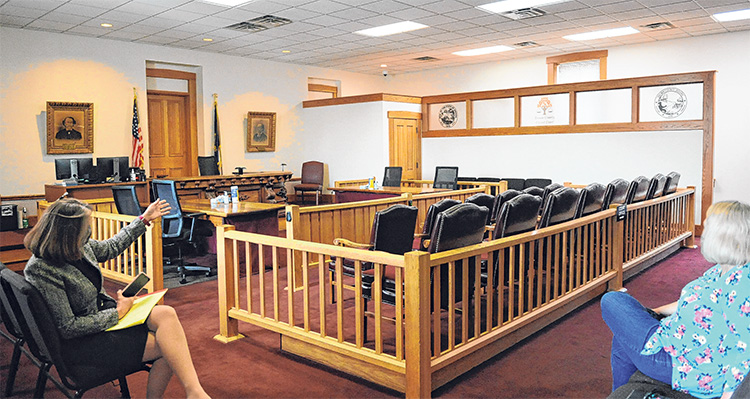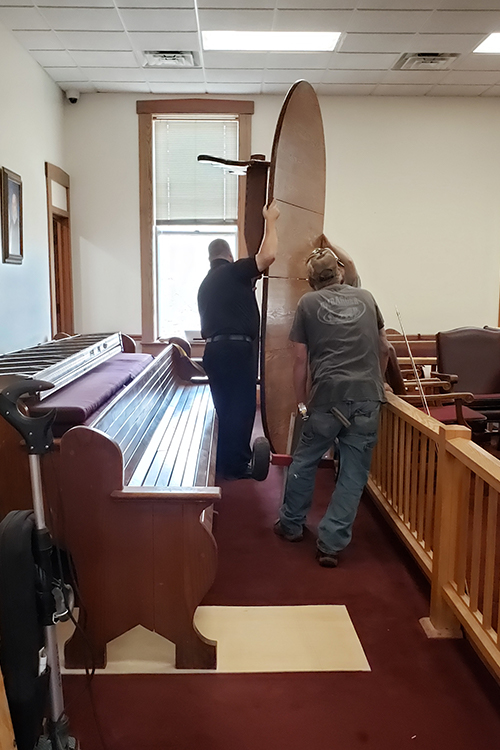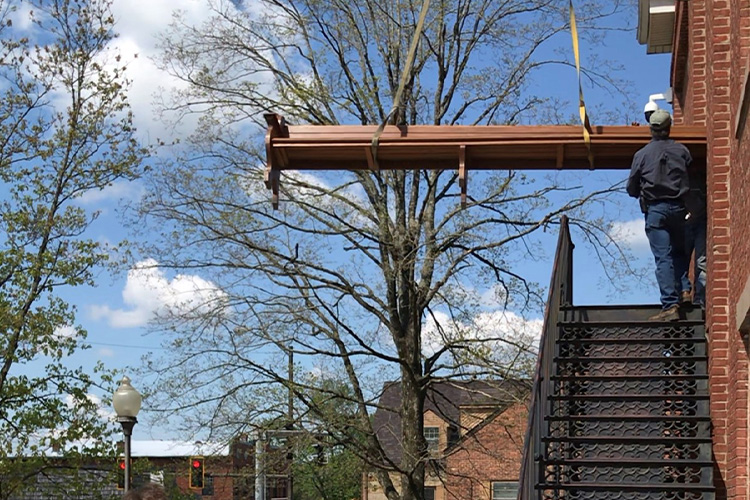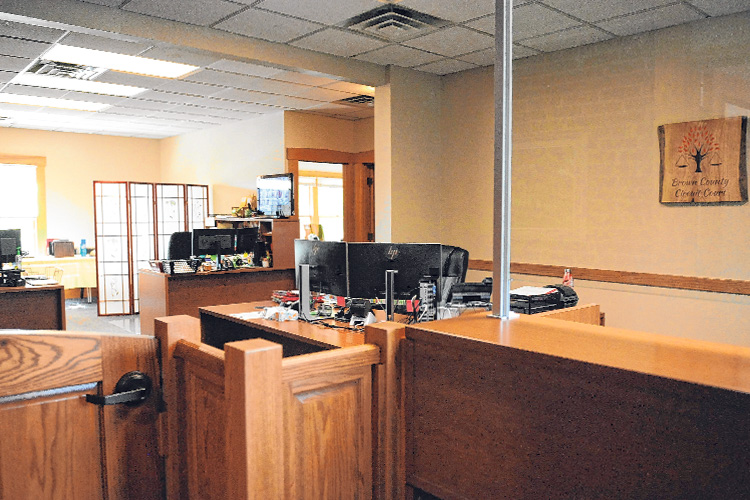By Michael Commons, Staff Attorney | Indiana Office of Court Services
History and the lure of something new
According to local lore, the original Brown County courthouse was constructed in 1837. The 24-foot by 18-foot log building and log jail were built for the price of $700. The original courthouse was used until 1853, when a brick structure was erected at the same location at a cost of $7,000. The second courthouse burned down in 1873, which led to the eventual construction of the current courthouse in 1877—for less than $9,000. In 1939 an annex offering office space was added. The building was extensively renovated in the early 1990s, but a building with such age desperately needs attention.
In 2019, the county commissioners considered building a new structure elsewhere in town to house court operations. Judge Mary Wertz of the Brown County Circuit Court felt strongly that this historic landmark should continue to be the home for Brown County’s justice system. “When you move your courthouse out of a historic location and building, the community just loses something.” She knew she needed a plan to make the building useful for years to come.

Identifying the problem: finding and funding the solution
In mid-2019, while Justice Geoffrey Slaughter and Supreme Court Sheriff Joe Dowdell were visiting Nashville to address the Brown County Junior High School “We The People” class, Sheriff Dowdell offered to schedule a time to conduct a security assessment of the Brown County Courthouse. When Judge Wertz learned of the 2020 Court Reform Courthouse Security grant opportunity through a message sent to judicial officers, she convened a local security commission meeting. Using the security assessment, the group agreed on three top priorities:
- restrict public access to the private court office area
- upgrade the video security system
- restrict entry for inmates coming into the courthouse
The county ended up covering the cost of the video system upgrade. Judge Wertz next reached out to a local architect to design a plan that included labor and material cost estimates. With all the details in hand, she was able to complete and submit her grant application. Once the grant funds were awarded, the county commissioners allocated additional funds to complete the projects.

The commissioners and the court wanted to address some long-standing inefficiencies with the building. A building raised in 1877 has its limitations. First, they wanted to make the court office and jury room ADA compliant. There were three steps up into the court office—the same three steps that had been tripping jurors getting into the jury room for years!
Also, in order to gain access to the court office, one had to walk through the courtroom. Once inside the court office, there were no barriers between the public and court staff. To solve all of these problems, a ramp was constructed behind a partial wall in the courtroom to access the court office, and a gate was installed in the entryway to the court office.

To make better use of limited space, the jury room was moved to the location of the former law library, and an ADA-compliant restroom was added. The old law library was filled with around 900 books. “You cannot really find someone to take American Law Review and American Jurisprudence books these days,” explained Judge Wertz. She ended up selling them on a government surplus marketplace and made several hundred dollars for the county. However, she saved some of the oldest, including volumes of Indiana Acts, Indiana Reports, and Indiana Appellate Reports, dating back as far as the 1840s and 1850s. These are now displayed on high shelves in the new jury room, which overlooks the Town of Nashville through large south- and west-facing windows.
Judge Wertz was concerned the work she and the commissioners were set to complete would not look right with the design and aesthetic of the historic courthouse. Local craftsman Steve Miller was able to make the new construction appear as though it had always been there. “You wouldn’t even really notice it if you didn’t know that this had not been here for quite some time,” said Judge Wertz.
Even the bailiff, Andy Reed, helped out with some of the work by identifying subcontractors, from the carpeting to the plumbing. “He really came through in terms of helping things move along in an organized way. He also painted the entire courtroom as a courtesy.” She added, “We joke about ‘other duties as assigned’ and what that means.”

The future of justice
“Thankfully, we found grant money to pay for things that I couldn’t have if that grant funding wasn’t available.” However, working in such an old building isn’t perfect. “The heating is off; the cooling is off. Different struggles, but it is worth it.” Sadly, they haven’t yet had the chance to use the new jury room due to restrictions on holding live jury trials in small spaces. They have had two jury trials at the new 2,000-seat Brown County Music Center. “It’s been an experience. Having a trial on a stage with a jury deliberating in a loading dock is nothing I thought I’d be doing, but it worked.”
With the Supreme Court’s Court Reform grant, justice has been restored to Brown County’s courthouse. These changes will last for future generations of this community.